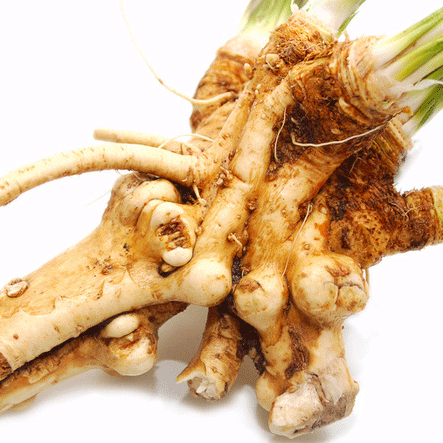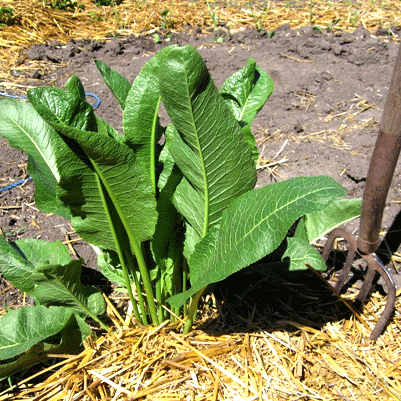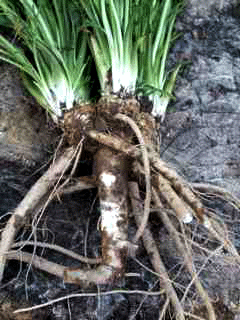Horseradish
Armoacia rusticana
Brassicaceae (Cruciferae)

the plant: A hardy perennial plant related to cabbages & broccoli, Horseradish is native to Europe and now cultivated around the world wherever there is a long growing season with a fairly cold winter. Horseradish has been used for centuries, and even millenia, as food and medicine, and is said to be one of the five bitter herbs historically eaten at Passover.
The plant can grow to be several feet tall, with long, wavy, tooth-edged leaves and bears many small white flowers around June. The root is long, white and thick, best harvested in autumn.Horseradish will spread eagerly once introduced to a patch of earth.
parts used: root
medicinal actions: circulatory stimulant, antimicrobial, expectorant,rubefacient, diuretic, bitter
preparation: grated fresh & preserved; acetous tincture in vinegar & honey; alcohol. Many varied folk preparations.
contraindications: Horseradish oils can irritate the skin or gastric tract if taken in high or concentrated doses, and should not be placed in the eyes.
indications: Horseradish has been used as food and medicine for centuries. It contains a potent pungent volatile oil similar to mustard oil, which gives its healing powers. Horseradish is a warming stimulant, invigorating the circulatory, nervous and  digestive systems and expectorating phlegm. Most of us have felt the way horseradish clears the sinuses upon eating a little bit or taking a strong whiff.
digestive systems and expectorating phlegm. Most of us have felt the way horseradish clears the sinuses upon eating a little bit or taking a strong whiff.
Its expectorant pungent quality makes it a useful remedy, taken orally, for ear, nose and throat congestion, lung problems, coughs and even asthma. Horseradish has antimicrobial properties that, along with the expectorant qualities & circulatory stimulation, make it a powerful ally during winter cold or flu season- take a sip of Horseradish infused 'fire cider' with a bit of honey, either to fend off at early signs, or to boost immunity, decongest, and 'sweat out' the fever after onset.
In the digestive system the bitter pungency of horseradish can stimulate digestive & liver function, help cut the fat in a rich meal, and aid in expelling worms. Horseradish as a stimulating rubefacient can bring relief to arthritic joints when applied externally and taken internally. Aditional traditional uses are recorded for horseradish as a diuretic for kidney & bladder issues, to treat paralysis, dropsy, and scurvy, and to remove discolorations of the skin.
note: This information is not a replacement for a trained herbalist. Please consult your medical professional before treating yourself or others with this or any other herbal remedy.